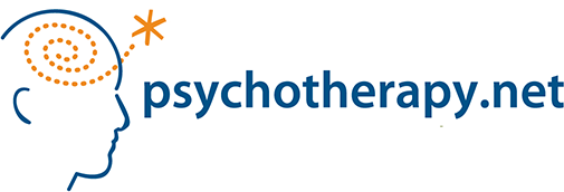The most authentic thing about us is our capacity to create, to overcome, to transform, to love and to be greater than our suffering - Ben Okri
“It’s a head-heart disconnect,” were the words of my supervisor when I asked her why my client, who seemed to ‘know’ or agree with our cognitive reframe of their traumatic experience, didn’t feel it. I’ve repeated those words countless times since—to clients, to colleagues, even to myself when reflecting on my own processes. The head-heart disconnect, when we know something intellectually, but don’t feel it emotionally.
In supervision, I shared my helplessness, feeling as though I were missing something essential. It seemed like no matter what we did—whether we used Socratic questions, conducted an anonymous survey of other people’s opinions, or used thought experiments about whether she would judge anyone else who had been in the situation as harshly—Sarah’s guilt persisted.
My supervisor, with the same gentle wisdom she’d shown me before, said, “is it guilt or is it also shame? I think it is shame you are dealing with, and what do we do with shame? We bring compassion to shame.”
That statement, and what it helped me to learn, changed my practice and my future research interests all at once. Up until then, I’d understood compassion as an element of the therapeutic relationship, but I had not yet worked with it as a core intervention. I began to understand how emotional change requires more than cognitive insight; it requires an internal felt sense of warmth, safety, and connection.
Shame relates to how we see ourselves through others’ eyes, or a lens through which we view ourselves. It can create a powerful urge to hide, even when there’s nothing to hide from. Compassion helps counteract this by fostering a body-mind sense of safeness, belonging, and acceptance.
In the following sessions, I introduced Sarah to the concept of her compassionate self. We practiced guided imagery, inviting her to imagine a nurturing, wise, and courageous part of herself—a part that could hold her pain without judgment. At first, she resisted. “This feels silly,” she said. “Why would I give myself compassion when I caused this?”
Together, we explored that resistance, gently uncovering her fears about compassion: that it might let her ‘off the hook’ or make her weak. Over time, she began to understand that self-compassion wasn’t about denying responsibility or making excuses. It was about recognising her suffering and meeting it with wisdom and strength.
One day, during an imagery exercise, we identified what fuelled Sarah’s shame was the isolation she had experienced at the time of the trauma. She had hidden what had happened to her from everyone close to her, while knowing that hundreds of people, possibly more, online, were aware and might be judging her. This isolation was, in part, the source of the intense shame she carried.
Together, we created a new image. Drawing on her knowledge that her close-knit group of friends did not blame her and would have surrounded her with solidarity and love if they had been there years ago, Sarah allowed herself to develop a felt sense of protection and connection instead of ostracisation and stigma. As she did so, the head-heart disconnect dissolved.
By shifting our attention away from guilt and blame toward shame and acceptance, Sarah was able to acknowledge that she had felt tricked and that it had been a painful experience. She learned to relate to her past self with wisdom, gentleness, and acceptance, replacing the internalised feelings of social danger and the urge to hide with an internalised feeling of social safeness and being deserving of care.
This experience profoundly shaped my clinical practice and research interests. I realised that, like Sarah, there may be more people who carry shame and hide because of online sexual experiences. I dedicated my doctoral research to developing a compassionate self-help programme and testing whether it might help individuals become more open to seeking support and relating to themselves in a kinder way.
There is still much work to be done in this area, but this experience taught me an essential lesson: the head-heart disconnect is not a sign of resistance or failure in therapy—it’s a sign that the heart hasn’t yet felt what the logical brain understands. Compassion is the bridge. And sometimes, we may find the work stems from the question “What would it take to feel safe enough to receive compassion?”
Transformation, creativity, love and the overcoming of suffering through compassion. This is what gives me hope in the darkness in my work at the Oak Tree Practice.
Questions for Thought and Discussion
File under: The Art of Psychotherapy, Musings and Reflections
“It’s a head-heart disconnect,” were the words of my supervisor when I asked her why my client, who seemed to ‘know’ or agree with our cognitive reframe of their traumatic experience, didn’t feel it. I’ve repeated those words countless times since—to clients, to colleagues, even to myself when reflecting on my own processes. The head-heart disconnect, when we know something intellectually, but don’t feel it emotionally.
Like what you are reading? For more stimulating stories, thought-provoking articles and new video announcements, sign up for our monthly newsletter.
As a newly qualified cognitive behavioural therapist at the time, I was still grappling with the difference between cognitive change at the head level versus the deeper, felt shift that happens when change touches the heart. When I encountered that disconnect in sessions, I felt helpless and confused.
Sarah: Freedom from Shame and Guilt through Self-Compassion
Many clients stand out in my memory. This is a fictional account inspired by them, but not representing any particular person in order to protect their privacy. Sarah was in her late twenties and had been grappling with intense self-blame following a traumatic online sexual experience. She would nod in agreement when we explored the lack of control she had over the situation and when we challenged the beliefs she held about herself as “naive and pathetic.” Yet, despite these rational shifts, her emotional reality remained unchanged. “I know you’re right,” she’d say, “but I still blame myself for what happened.” It was difficult to witness how much guilt Sarah carried, as though she were the perpetrator.In supervision, I shared my helplessness, feeling as though I were missing something essential. It seemed like no matter what we did—whether we used Socratic questions, conducted an anonymous survey of other people’s opinions, or used thought experiments about whether she would judge anyone else who had been in the situation as harshly—Sarah’s guilt persisted.
My supervisor, with the same gentle wisdom she’d shown me before, said, “is it guilt or is it also shame? I think it is shame you are dealing with, and what do we do with shame? We bring compassion to shame.”
That statement, and what it helped me to learn, changed my practice and my future research interests all at once. Up until then, I’d understood compassion as an element of the therapeutic relationship, but I had not yet worked with it as a core intervention. I began to understand how emotional change requires more than cognitive insight; it requires an internal felt sense of warmth, safety, and connection.
Shame relates to how we see ourselves through others’ eyes, or a lens through which we view ourselves. It can create a powerful urge to hide, even when there’s nothing to hide from. Compassion helps counteract this by fostering a body-mind sense of safeness, belonging, and acceptance.
In the following sessions, I introduced Sarah to the concept of her compassionate self. We practiced guided imagery, inviting her to imagine a nurturing, wise, and courageous part of herself—a part that could hold her pain without judgment. At first, she resisted. “This feels silly,” she said. “Why would I give myself compassion when I caused this?”
Together, we explored that resistance, gently uncovering her fears about compassion: that it might let her ‘off the hook’ or make her weak. Over time, she began to understand that self-compassion wasn’t about denying responsibility or making excuses. It was about recognising her suffering and meeting it with wisdom and strength.
Compassion-Focused Therapy in Action
The shift didn’t happen overnight, but gradually, Sarah started to replace feelings of numbness and the extreme discomfort of shame with the underlying pain and the caring feelings she needed to heal. As part of this process, we introduced soothing rhythm breathing—a core Compassion Focused Therapy practice that activates the parasympathetic nervous system and fosters a sense of inner safety. Sarah practiced breathing slowly, finding her own soothing rhythm that settled and calmed her. This simple, embodied exercise became an anchor for her, helping her regulate overwhelming emotions and connect to a felt sense of stability.One day, during an imagery exercise, we identified what fuelled Sarah’s shame was the isolation she had experienced at the time of the trauma. She had hidden what had happened to her from everyone close to her, while knowing that hundreds of people, possibly more, online, were aware and might be judging her. This isolation was, in part, the source of the intense shame she carried.
Together, we created a new image. Drawing on her knowledge that her close-knit group of friends did not blame her and would have surrounded her with solidarity and love if they had been there years ago, Sarah allowed herself to develop a felt sense of protection and connection instead of ostracisation and stigma. As she did so, the head-heart disconnect dissolved.
By shifting our attention away from guilt and blame toward shame and acceptance, Sarah was able to acknowledge that she had felt tricked and that it had been a painful experience. She learned to relate to her past self with wisdom, gentleness, and acceptance, replacing the internalised feelings of social danger and the urge to hide with an internalised feeling of social safeness and being deserving of care.
This experience profoundly shaped my clinical practice and research interests. I realised that, like Sarah, there may be more people who carry shame and hide because of online sexual experiences. I dedicated my doctoral research to developing a compassionate self-help programme and testing whether it might help individuals become more open to seeking support and relating to themselves in a kinder way.
There is still much work to be done in this area, but this experience taught me an essential lesson: the head-heart disconnect is not a sign of resistance or failure in therapy—it’s a sign that the heart hasn’t yet felt what the logical brain understands. Compassion is the bridge. And sometimes, we may find the work stems from the question “What would it take to feel safe enough to receive compassion?”
Transformation, creativity, love and the overcoming of suffering through compassion. This is what gives me hope in the darkness in my work at the Oak Tree Practice.
Questions for Thought and Discussion
- Have you encountered a 'head-heart disconnect' with your clients? What interventions helped bridge this gap?
- How do you distinguish between guilt and shame in your clinical work, and how might compassion help address each?
- How might incorporating embodied practices, like soothing rhythm breathing, support clients in connecting with a felt sense of compassion?
- Are you able to find compassion for yourself when you feel helpless at times? What helps you to do so?
File under: The Art of Psychotherapy, Musings and Reflections






